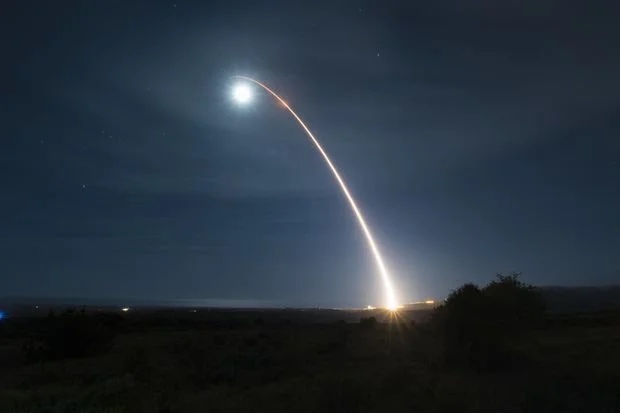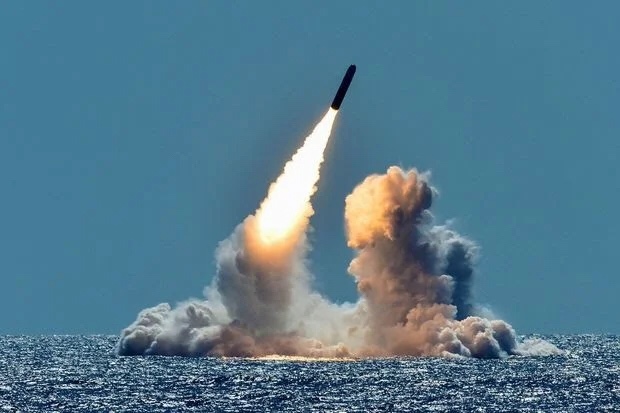
Biden to Review U.S. Nuclear-Weapons Programs, With Eye Toward Cuts
President-elect promised to reduce ‘excessive’ spending on nuclear arsenal and shrink its role in strategy, but critics say updates are overdue
By Michael R. Gordon
Updated Dec. 24, 2020 1:22 pm ET
WASHINGTON—The incoming Biden administration is planning a review of the nation’s $1.2 trillion nuclear-modernization program with an eye toward trimming funding for nuclear weapons and reducing their role in Pentagon strategy.
President-elect Joe Biden promised during the campaign to reduce the U.S.’s “excessive expenditure” on nuclear arms and criticized President Trump’s decision to develop new sea-based weapons, including a submarine-launched cruise missile.
The new administration is also likely to review the Pentagon’s decision to develop a new land-based intercontinental ballistic missile, which is estimated to cost more than $100 billion when its warhead is included, some former officials said.
“We have to modernize our deterrent,” said one former official. “But we cannot spend the amount of money that is currently being allocated.”
The expectation that Mr. Biden will take a fresh look at the modernization programs has spurred a debate over the future of the U.S. nuclear deterrent.

The incoming Biden administration will reassess the role of nuclear weapons in Pentagon strategy.
PHOTO: STEFANI REYNOLDS/BLOOMBERG NEWS
Trump officials say that the development of new U.S. air, land and sea-based nuclear systems, dubbed the Nuclear Triad in strategic doctrine, is overdue, and that many of the programs were supported by the Obama administration.
“Most of the systems that compose the Triad are operating well beyond their original design lives,” read a Pentagon fact sheet published in November. “They must be modernized or they will be lost.”
Arms-control proponents counter that the spiraling federal deficit and the possibility of new talks with the Russians should open the door for scaling back the nuclear modernization effort. They have drawn up lists of potential cuts for Mr. Biden to consider.
“The increasingly punishing cost of the Trump administration’s excessive nuclear-modernization plans demands a fundamental rethinking,” said Kingston Reif of the Arms Control Association, a private group that supports arms-control treaties.
The debate has also been driven by Mr. Biden’s campaign pledge to narrow the role that nuclear weapons play in the U.S. military doctrine, stating that their “sole purpose” should be to deter or respond to a nuclear attack.
‘The increasingly punishing cost of the Trump administration’s excessive nuclear-modernization plans demands a fundamental rethinking.’
— Kingston Reif, the Arms Control Association
Such a move would depart from current U.S. military doctrine, which cautions that the U.S. might use nuclear weapons to respond to “significant non-nuclear strategic attacks” in “extreme circumstances.”
That statement has been taken as a warning that adversaries that use cyberwarfare or germ weapons or mount a major conventional attack against the U.S. and its allies risk triggering an American nuclear response.
Mr. Biden hasn’t said how quickly he might move to implement his “sole purpose” doctrine, noting that he would consult with U.S. military leaders and allies.
Former officials say, however, that narrowing the role of nuclear weapons would necessitate strengthening conventional military capabilities. That, in turn, could put a premium on containing nuclear costs by deferring some systems or trying to negotiate nuclear-weapons reductions with Moscow.
Mr. Biden has said that he wants to extend the New START treaty with Russia, which is due to expire in February, and use the accord as a foundation to pursue future arms-control arrangements.
A spokesman for the Biden transition declined to comment on what steps Mr. Biden might take to defer or cancel U.S. nuclear programs.
The most consequential debate among experts trying to influence Mr. Biden’s nuclear policy is over the Pentagon’s plans to replace its aging Minuteman III missile with a new intercontinental ballistic missile that would be deployed in about a decade. The total cost of buying and maintaining the missile into the 2070s has been estimated by the Pentagon to run as high as $264 billion.
Missiles based in underground silos have long been considered a destabilizing system by arms-control groups, who say the weapons’ vulnerability to attack could put pressure on a U.S. president to use them early in a conflict, potentially on the basis of erroneous warning.
George Perkovich and Pranay Vaddi of the Carnegie Endowment for International Peace recommended in a study submitted to the Biden transition team that a next-generation ICBM program be halted pending future arms talks that would seek to set stricter limits on the U.S. and Russian land-based missile force.
“Pausing a decision to build a new ICBM defers a big expense and provides time to pursue arms talks with the Russians,” Mr. Perkovich said. “If the Russians don’t move, you can revisit the program.”
Such an approach would require extending the life of the Minuteman-III missiles, which were first deployed in 1970. That could be done, the Carnegie study says, by cutting the number of deployed Minuteman missiles from 400 to 300 or fewer, and then using components from the excess missiles to maintain the smaller force.
Other experts, however, say the incoming administration should move ahead with the new ICBM program.
“All three legs of the Triad, including Minuteman-III, are getting very long in the tooth,” said Frank Klotz, the former head of the National Nuclear Security Administration and a retired Air Force lieutenant general.
“There is only so much one can do to extend the life of an existing system before it makes more sense, both technically and economically, to replace it with a fundamentally new system,” he added. “We have reached that point.”
Other decisions also loom. One nuclear program that might face cancellation is a sea-launched cruise missile the Trump administration called for in 2018. During the campaign, Mr. Biden told the Council for a Livable World, an advocacy group that supports nuclear cuts, that the U.S. doesn’t need new nuclear weapons.

An unarmed Trident missile was tested off the coast of California in 2018.
PHOTO: HANDOUT/REUTERS
The missile has yet to be developed and its necessity has been challenged by some former officials, who noted that the Pentagon has suggested it could serve as a potential bargaining chip with Moscow.
Mr. Biden has also criticized Mr. Trump’s decision to develop the W76-2, a low-yield warhead for Trident II submarine-launched missiles. The Trump administration says the “low-yield” system would provide the U.S. with more credible options to respond to Russia’s threats without resorting to more powerful strategic weapons, but critics contend it will lower the threshold for nuclear war.
Canceling the program wouldn’t save significant funds since the warhead has already been deployed. Arms-control advocates are divided over the wisdom of replacing it with the older and more powerful warheads as this would put Mr. Biden in the position of supporting the deployment of more destructive weapons.
The complexity of some of the decisions is illustrated by the case of the W93, a newly designed warhead the Trump administration decided to develop for the U.S. submarine-launched missile force. The Arms Control Association has urged Mr. Biden to defer or cancel it, but Rep. Adam Smith, the Washington Democrat who chairs the House Armed Services Committee, says he supports the program, partly because the British plan to put the warheads on their submarine missiles.
“The U.K. is pushing a lot of that,” Mr. Smith said in a seminar hosted by the Center for Strategic and International Studies, a nonpartisan think tank. “Do we need to do it right now? That’s a tougher question.”
Write to Michael R. Gordon at michael.gordon@wsj.com
No comments:
Post a Comment